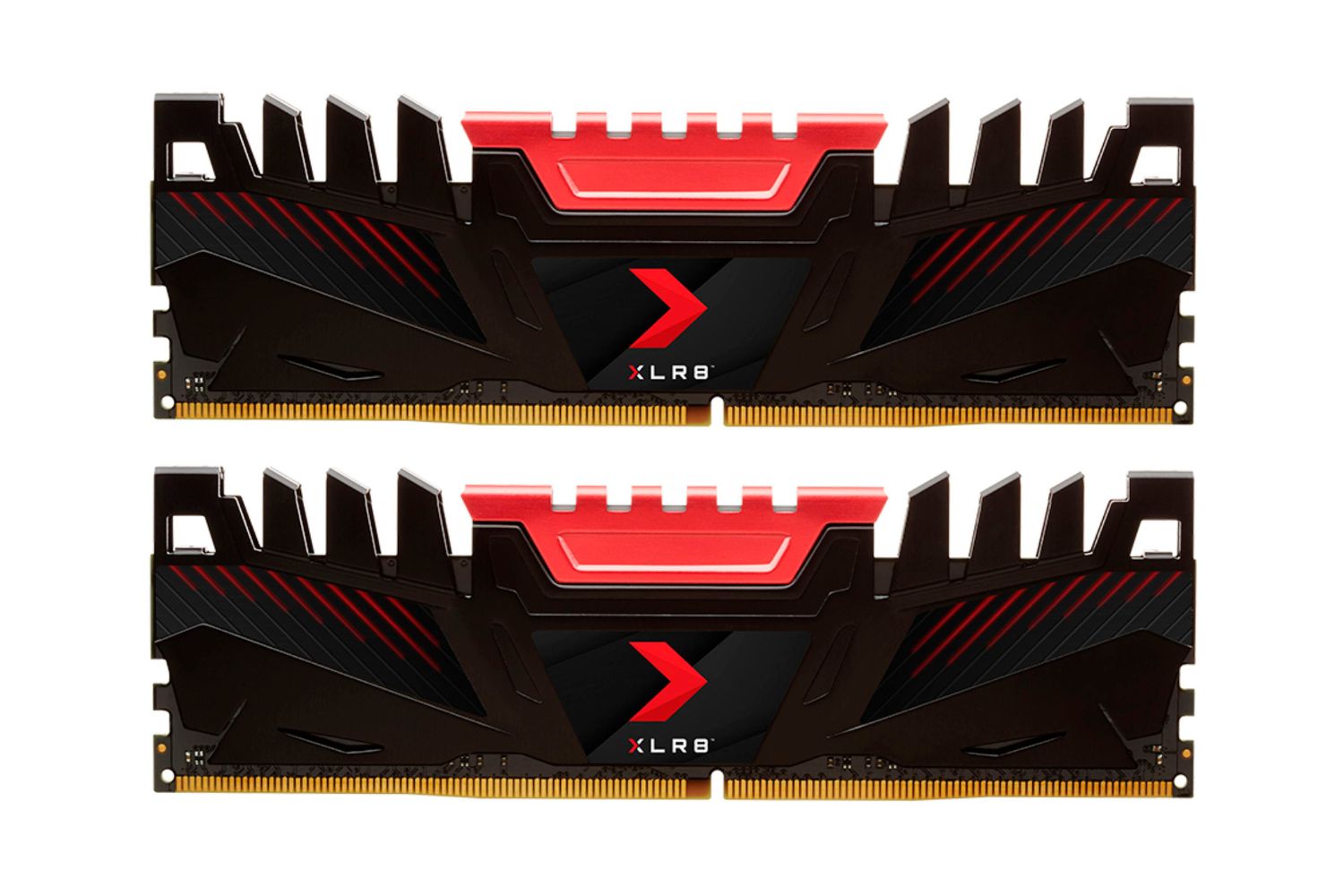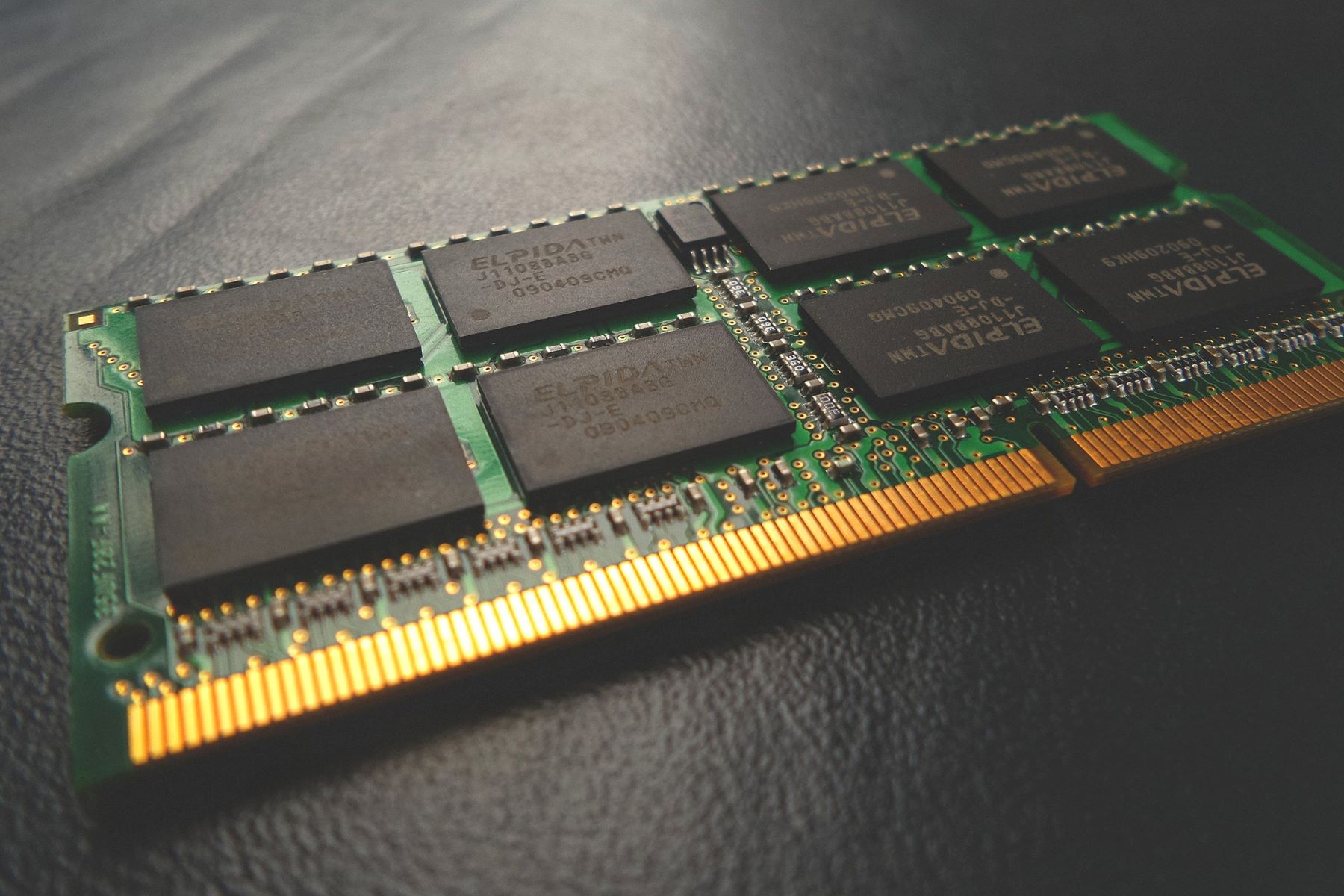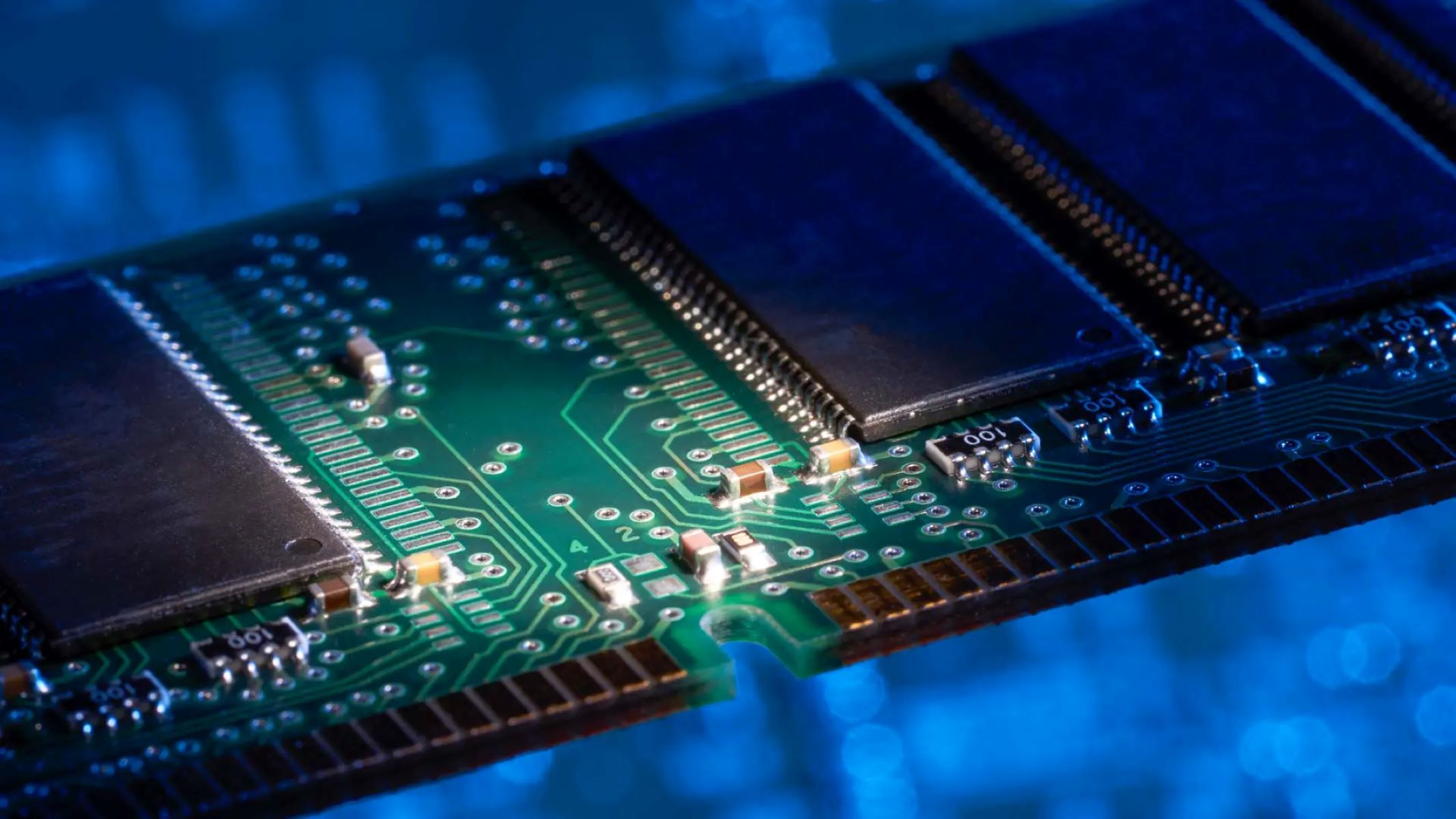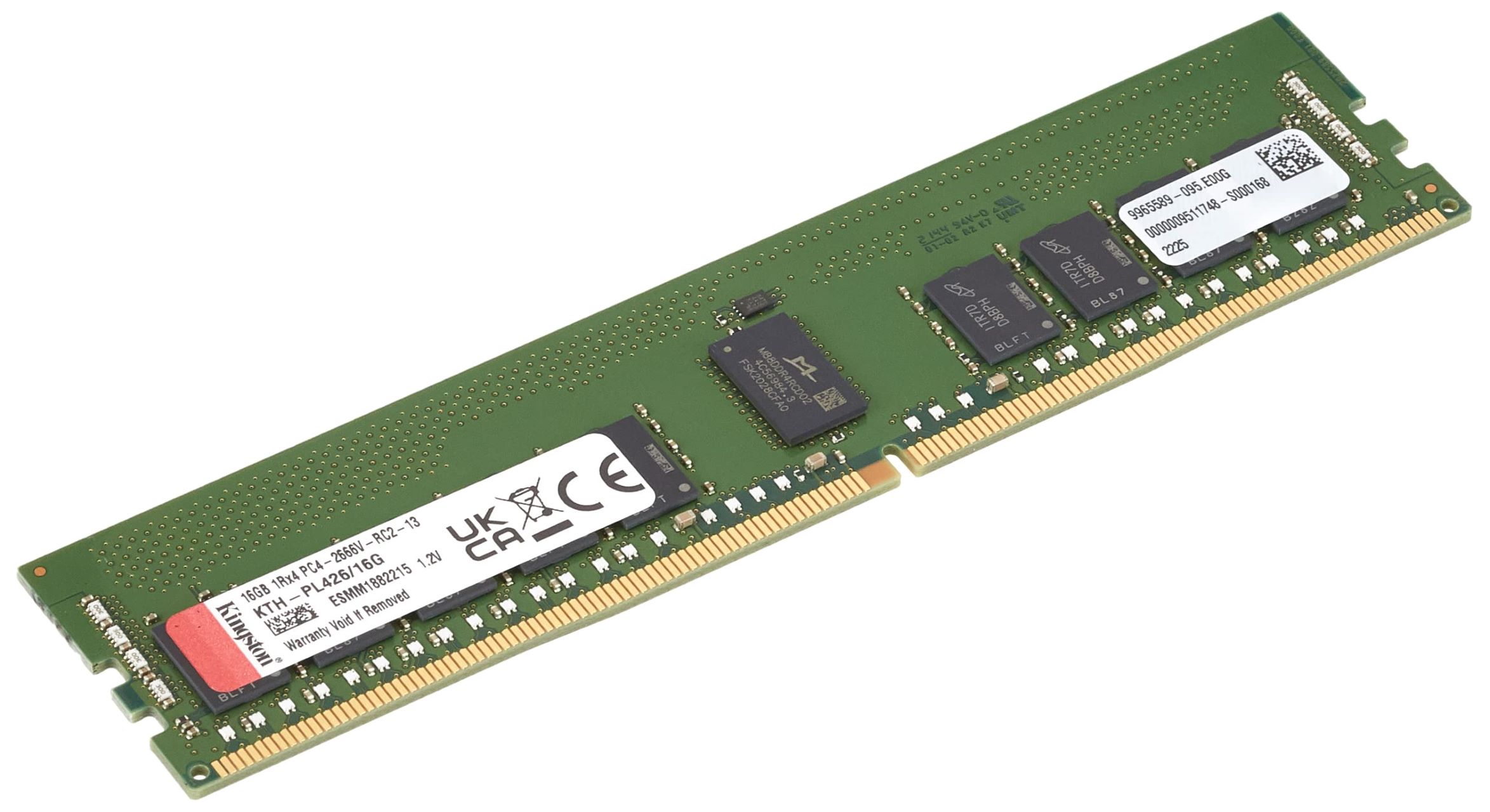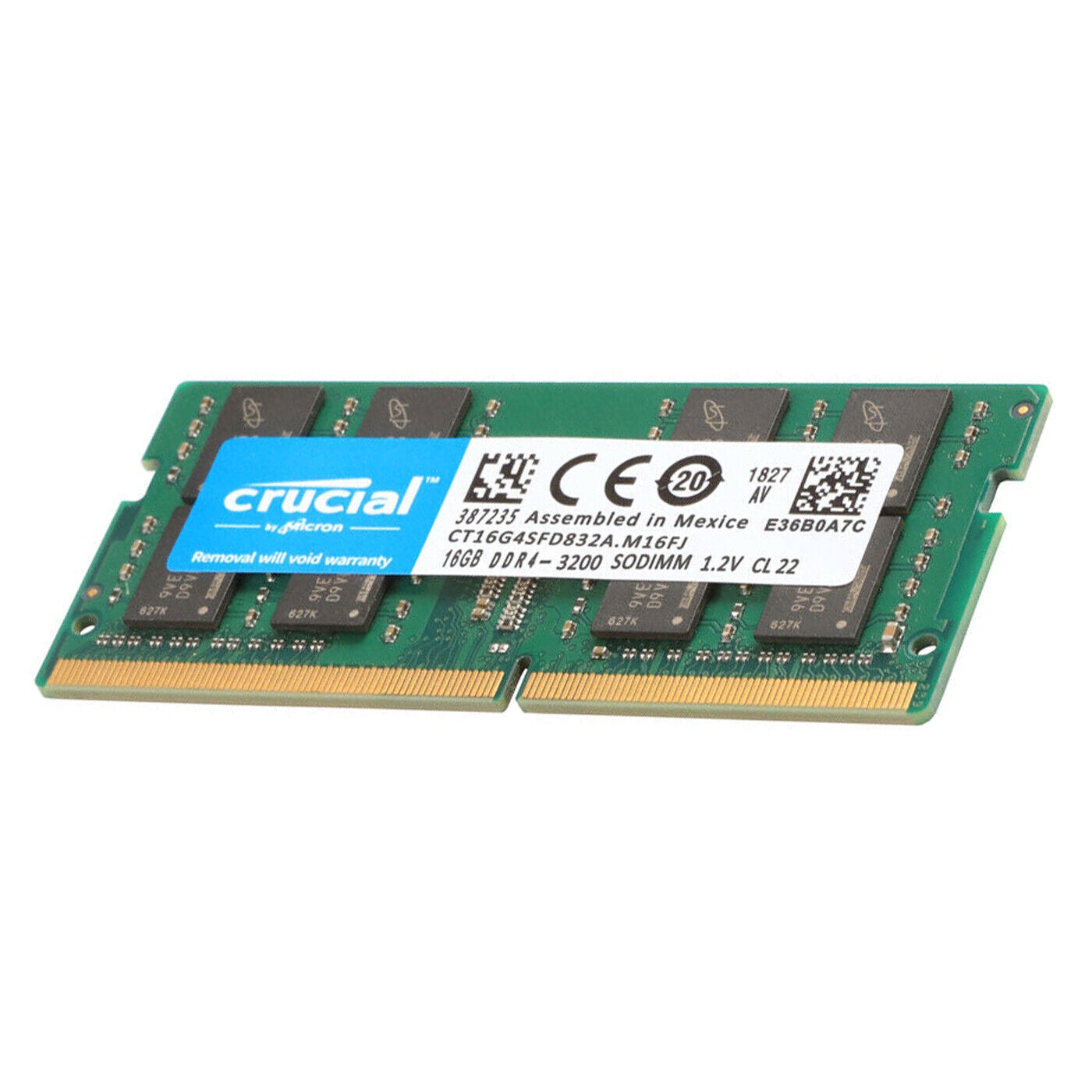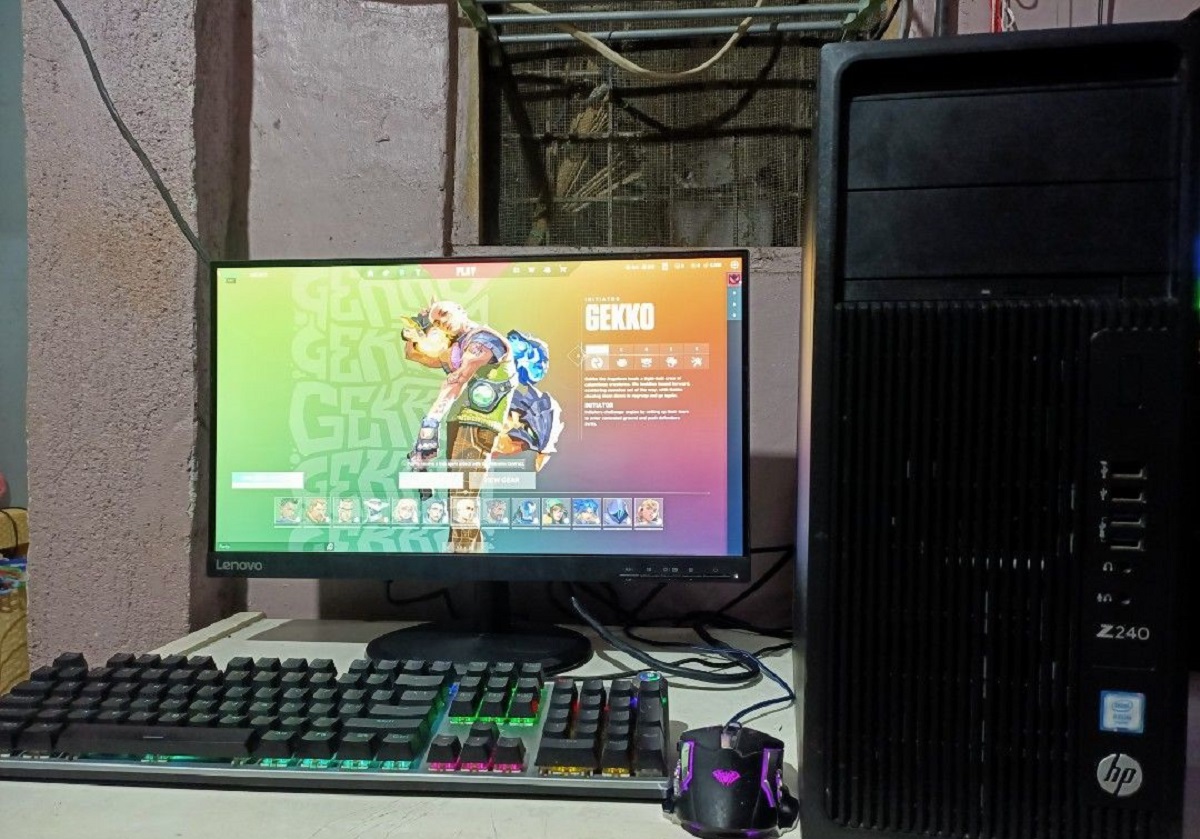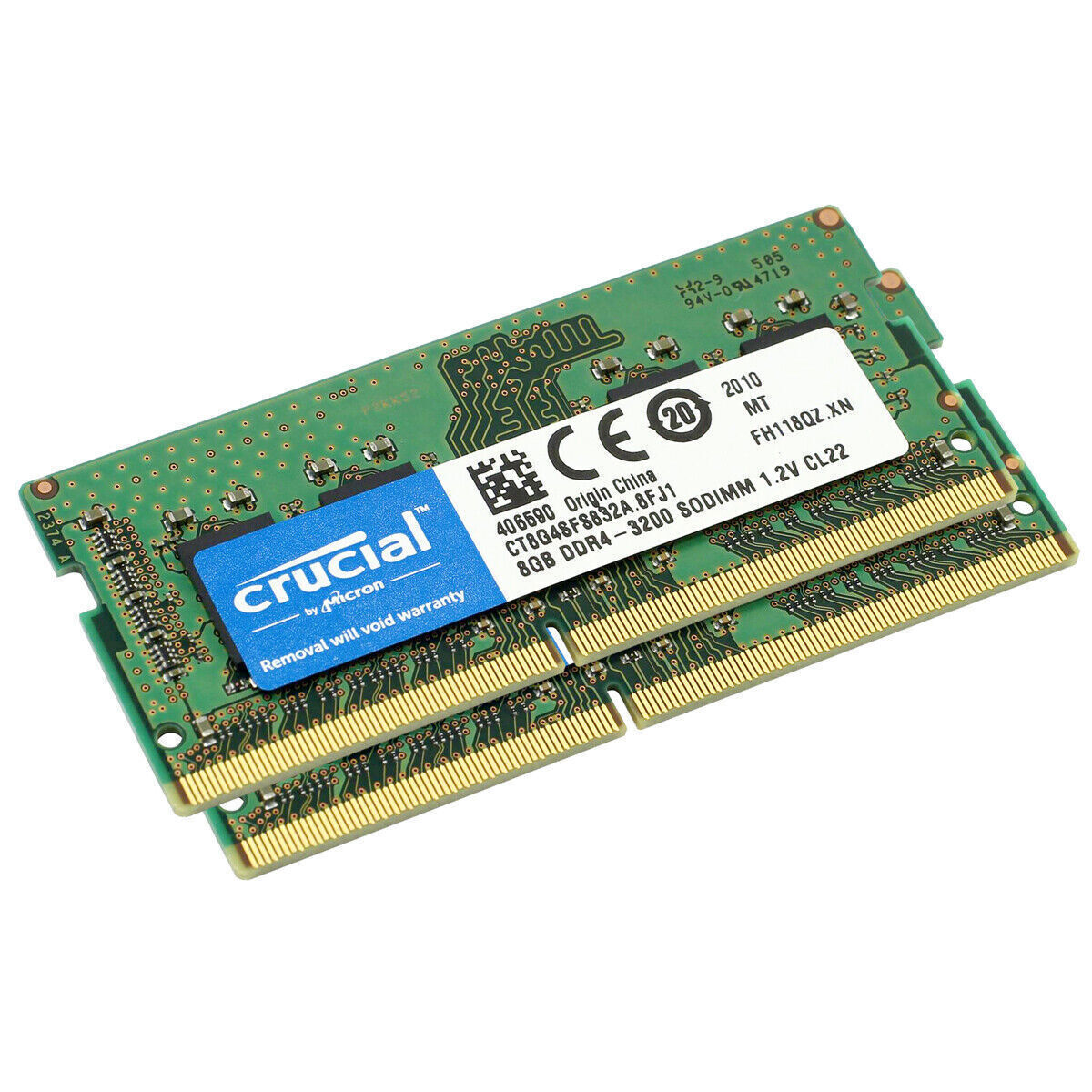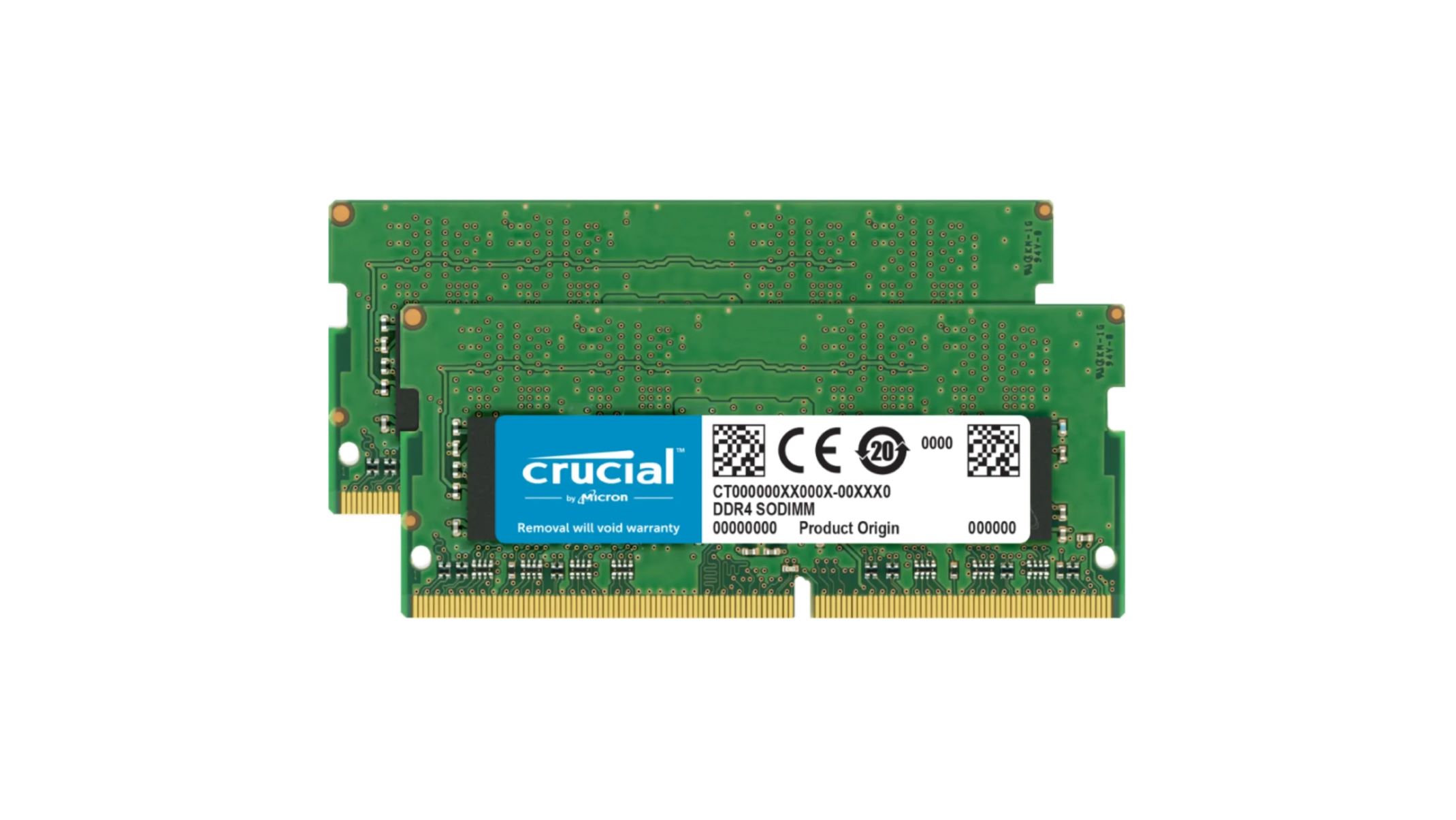Introduction
PC4 RAM, also known as DDR4 RAM, has become the standard choice for modern computer systems and devices. This advanced form of memory offers improved performance and efficiency compared to its predecessors. In this article, we will delve into the world of PC4 RAM and explore its features, advantages, and compatibility.
RAM, or Random Access Memory, is an essential component in any computer system. It plays a crucial role in storing and accessing data that is actively being used by the CPU. PC4 RAM is the fourth generation of DDR (Double Data Rate) RAM and offers significant enhancements over its previous generations.
The primary difference between PC4 RAM and its older generations, such as DDR3 or DDR2, lies in its higher data transfer rates and increased bandwidth. PC4 RAM can achieve faster speeds, allowing for quicker data access and improved system performance. Additionally, PC4 RAM operates at lower voltages, resulting in reduced power consumption compared to older RAM types.
One of the key advantages of PC4 RAM is its increased capacity. PC4 RAM modules can have larger capacities, ranging from 4GB to 128GB, making them ideal for demanding applications and multitasking scenarios. This increased capacity allows for smoother operation and seamless multitasking, enabling users to run memory-intensive programs without experiencing slowdowns or lag.
PC4 RAM is also designed to be more reliable and stable, thanks to its improved error correction capabilities. It uses advanced error-checking methods to detect and correct data errors, ensuring data integrity and system stability.
There are different types of PC4 RAM available, including standard DIMMs (Dual In-Line Memory Modules) and SO-DIMMs (Small Outline Dual In-Line Memory Modules). DIMMs are commonly used in desktop computers and servers, while SO-DIMMs are typically used in laptops and compact systems. It is important to choose the appropriate type of PC4 RAM based on your system’s requirements.
When it comes to installation, PC4 RAM is relatively straightforward. It follows a similar installation process to previous RAM generations, requiring you to align the notches on the RAM module with the corresponding slots on the motherboard and firmly press it down until it clicks into place. However, it is essential to consult your motherboard’s documentation and ensure compatibility with PC4 RAM before making a purchase.
Lastly, PC4 RAM can be overclocked to achieve even higher performance. Overclocking involves increasing the RAM’s frequency beyond its default speed, which can result in improved system responsiveness and faster data processing. However, it is important to note that overclocking may void warranties and should be done cautiously to avoid stability issues.
PC4 RAM Explained
PC4 RAM, also known as DDR4 RAM, is the fourth generation of DDR (Double Data Rate) RAM and offers significant improvements over its predecessors. It is the standard memory technology used in modern computer systems and devices.
PC4 RAM operates at higher data transfer rates and increased bandwidth compared to older RAM generations like DDR3 or DDR2. This means faster and more efficient access to data, resulting in improved system performance. Additionally, PC4 RAM operates at lower voltages, reducing power consumption and heat generation.
The capacity of PC4 RAM modules is also significantly larger, ranging from 4GB to 128GB, providing ample space for memory-intensive tasks. This increased capacity allows for smoother multitasking and running memory-hungry programs without experiencing performance bottlenecks.
PC4 RAM incorporates advanced error correction capabilities, ensuring data integrity and system stability. It uses error-checking methods to identify and rectify data errors, enhancing the overall reliability of the system.
Another significant feature of PC4 RAM is its backward compatibility. It can be used with motherboards that support previous DDR generations, although it will operate at the speed of the slowest compatible RAM module installed.
PC4 RAM modules are available in two primary form factors. DIMMs (Dual In-Line Memory Modules) are commonly used in desktop computers and servers. These modules are larger and offer higher capacities, making them suitable for power-hungry applications and demanding workloads.
SO-DIMMs (Small Outline Dual In-Line Memory Modules) are smaller and more compact, making them suitable for laptops and small-form-factor devices. These modules are used when space is limited and provide excellent performance in a smaller package.
PC4 RAM modules have a specific clock speed, which determines how quickly data can be transferred. The higher the clock speed, the faster the RAM performance. It is crucial to consider the supported clock speed of the motherboard when selecting PC4 RAM to ensure compatibility and optimal performance.
When upgrading or installing PC4 RAM, it is essential to consult the motherboard’s documentation to determine the maximum supported capacity and compatibility requirements. Installing RAM modules with incompatible specifications can result in system instability or failure to boot.
Overall, PC4 RAM is a significant advancement in memory technology, offering faster speeds, increased capacities, improved reliability, and backward compatibility. It is a crucial component for users who require high-performance computing and multitasking capabilities.
Difference Between PC4 RAM and Older Generations
PC4 RAM, also known as DDR4 RAM, differs from its older generations, such as DDR3 or DDR2, in several key aspects. These differences contribute to improved performance, increased capacities, and energy efficiency. Let’s explore the dissimilarities between PC4 RAM and older generation RAM.
The most noticeable difference is the data transfer rates and bandwidth. PC4 RAM offers higher speeds, allowing for more rapid data access and retrieval. This results in improved overall system performance, particularly in memory-intensive tasks like gaming, video editing, and multitasking.
Another significant difference is the operating voltage. PC4 RAM operates at lower voltages compared to older RAM types. This reduction in voltage leads to decreased power consumption and heat generation, resulting in better energy efficiency and cooler running systems.
PC4 RAM also boasts increased memory module capacities. In contrast to older generations, PC4 RAM modules can offer larger storage capacities, ranging from 4GB to 128GB. This expanded capacity allows for more extensive data storage and faster access to information, enhancing overall system responsiveness and performance.
PC4 RAM utilizes advanced error correction techniques to maintain data integrity. It incorporates Enhanced Data Output (EDO) and Error Correcting Code (ECC) features, which detect and correct errors in real-time, ensuring reliable operation even in high-demand computing environments. Older RAM generations may not have such sophisticated error correction capabilities.
Furthermore, PC4 RAM modules have a higher clock frequency, which refers to the speed at which data can be transferred. Higher clock frequencies result in faster and more efficient data transmission between the RAM and CPU. This is especially beneficial for memory-intensive tasks, where quick data access and retrieval are crucial.
While PC4 RAM offers significant improvements over older generations, there are some compatibility considerations to keep in mind. PC4 RAM is not backward compatible with older DDR generations. This means that DDR3 modules, for example, will not work on a motherboard designed for DDR4 RAM. It is essential to check the motherboard’s specifications and ensure compatibility before upgrading or installing PC4 RAM.
Additionally, the physical form factor of PC4 RAM modules may vary from older generations. DIMMs, the standard memory module for PCs, have undergone changes in shape and pin configuration between DDR3 and DDR4. Therefore, it is vital to select the correct form factor for your motherboard when choosing PC4 RAM.
In summary, PC4 RAM brings notable improvements in data transfer rates, energy efficiency, capacity, and error correction capabilities compared to older generations of RAM. These advancements translate to enhanced system performance and responsiveness, making PC4 RAM the ideal choice for users seeking optimal computing experiences.
Advantages of PC4 RAM
PC4 RAM, or DDR4 RAM, offers several advantages over its older generations, making it a desirable choice for modern computer systems. These advantages contribute to improved performance, increased capacities, energy efficiency, and enhanced data integrity. Let’s explore the advantages of PC4 RAM in more detail.
1. Faster Speeds: PC4 RAM operates at higher data transfer rates and increased bandwidth compared to older RAM generations, such as DDR3 or DDR2. This results in faster and more efficient access to data, leading to improved system responsiveness and performance.
2. Increased Capacities: PC4 RAM modules come in larger capacities, ranging from 4GB to 128GB. This expanded capacity allows for more extensive data storage and faster access to information, making it ideal for memory-intensive tasks and multitasking scenarios.
3. Energy Efficiency: PC4 RAM operates at lower voltages compared to older RAM types. This reduction in voltage results in reduced power consumption and heat generation. Lower power consumption not only contributes to energy savings but also helps maintain cooler running systems.
4. Enhanced Data Integrity: PC4 RAM incorporates advanced error correction techniques, such as Enhanced Data Output (EDO) and Error Correcting Code (ECC), which help detect and correct errors in real-time. These features ensure data integrity, making PC4 RAM more reliable and stable, particularly in high-demand computing environments.
5. Backward Compatibility: While not compatible with older DDR generations, PC4 RAM modules are designed to be backward compatible with motherboards that support DDR3. This means you can upgrade your system incrementally, enjoying the benefits of PC4 RAM while still maintaining compatibility with existing hardware.
6. Overclocking Potential: PC4 RAM can be overclocked to achieve even higher speeds and performance. Overclocking involves increasing the RAM’s frequency beyond its default speed. This allows for faster data processing and improved system responsiveness. However, it is important to note that overclocking should be done cautiously and within safe limits to ensure system stability.
7. Future-Proof Technology: PC4 RAM is the current standard in memory technology, widely adopted in modern computer systems. By choosing PC4 RAM, you are investing in a technology that is likely to remain relevant for years to come, ensuring compatibility and upgradability for future hardware and software advancements.
Overall, PC4 RAM offers significant advantages in terms of speed, capacity, energy efficiency, data integrity, compatibility, overclocking potential, and future-proofing. These advantages make PC4 RAM the preferred choice for users who demand high-performance computing and a seamless multitasking experience.
Types of PC4 RAM
PC4 RAM, also known as DDR4 RAM, comes in different types and form factors to suit various computer systems and devices. Understanding these types will help you choose the right PC4 RAM for your specific requirements. Let’s explore the different types of PC4 RAM:
1. DIMM (Dual In-Line Memory Module): DIMMs are the most common type of PC4 RAM and are used in desktop computers and servers. They come in various capacities, ranging from 4GB to 128GB. DIMMs are larger in size and typically offer higher capacities, making them suitable for power-hungry applications and tasks that require extensive memory usage.
2. SO-DIMM (Small Outline Dual In-Line Memory Module): SO-DIMMs are smaller and more compact than DIMMs, making them ideal for laptops and small-form-factor devices. They are commonly used in laptops, mini PCs, and compact systems. SO-DIMMs generally have lower capacities compared to DIMMs, ranging from 4GB to 32GB, but provide excellent performance in a smaller package.
3. ECC (Error Correcting Code) RAM: ECC RAM is a type of PC4 RAM that incorporates advanced error correction capabilities. It is widely used in mission-critical systems, such as servers and workstations, where data integrity is crucial. ECC RAM can detect and correct errors in real-time, ensuring reliable operation and protecting against potential data corruption.
4. Registered RAM: Registered RAM, also known as buffered RAM, is another type of PC4 RAM commonly used in server environments. It features an additional register between the RAM module and the memory controller, helping to reduce electrical load and improve signal integrity. Registered RAM allows for larger memory capacities and is highly beneficial in high-density servers and memory-intensive applications.
5. Unbuffered RAM: Unbuffered RAM, often referred to as non-ECC RAM, is the standard type of PC4 RAM used in consumer-grade systems, such as home desktops and gaming computers. It offers fast memory access and is generally more affordable compared to registered RAM or ECC RAM. Unbuffered RAM is suitable for most everyday computing tasks and provides excellent performance for gaming and multimedia applications.
It is essential to consider your system’s requirements and specifications when selecting PC4 RAM. Determine whether you need DIMMs or SO-DIMMs based on the form factor supported by your motherboard or system. Additionally, assess whether your system requires ECC or non-ECC RAM based on the desired level of error correction and data integrity. Checking the motherboard’s documentation or consulting with the manufacturer will help ensure you choose the right type of PC4 RAM for your specific needs.
Ultimately, with the different types of PC4 RAM available, you can find the perfect fit for your computer system, whether it’s a powerful desktop, a compact laptop, or a high-performance server. Selecting the appropriate PC4 RAM type will help optimize system performance and provide an efficient and seamless computing experience.
Compatibility and Installation
When upgrading or installing PC4 RAM, it is essential to consider compatibility with your system and follow the correct installation procedures. Ensuring compatibility and proper installation will help maximize the performance and stability of your computer system. Let’s explore compatibility and installation aspects of PC4 RAM:
1. Compatibility: It is crucial to check the compatibility of PC4 RAM with your motherboard or system. Verify the type of RAM supported by your system, whether it’s DIMM or SO-DIMM, and the maximum capacity and speed supported. Consult the motherboard’s documentation or visit the manufacturer’s website to find this information. Installing PC4 RAM that is not compatible with your system may lead to compatibility issues, system instability, or failure to boot.
2. Installation: Installing PC4 RAM follows a similar process to previous RAM generations. Here’s a step-by-step guide:
- Turn off your computer and unplug it from the power source for safety.
- Open your computer case or access the RAM slots on your laptop.
- Ensure you are properly grounded to prevent static electricity damage. You can use an anti-static wristband or touch a grounded metal surface.
- Identify the RAM slots on your motherboard. They are usually long and parallel to each other.
- If adding or replacing RAM modules, gently remove the existing module by pushing the clips at each end of the slot outward. The module will pop up at an angle, allowing you to remove it.
- If the slots have protective plastic clips, gently pull them to the sides to prepare for the new RAM module. Be careful not to touch the gold contacts on the module.
- Align the notch on the RAM module with the slot on the motherboard. Ensure it is in the correct orientation.
- Insert the module at a slight angle into the slot, making sure it is fully seated. Firmly press down until you hear or feel a click, indicating that the module is properly installed.
- If necessary, reinstall the protective clips on the slots to secure the RAM module in place.
- Close your computer case or reassemble the laptop and reconnect all cables.
- Power on your computer and check the system information or BIOS to confirm that the new RAM has been recognized and is functioning properly.
It is worth noting that some systems may require manual BIOS configuration to utilize the full capacity and correct speed of the installed RAM. Refer to your motherboard’s documentation or online resources for guidance on adjusting BIOS settings if needed.
Remember, whether you are adding more RAM or replacing existing modules, it is crucial to use the same type (e.g., DIMM or SO-DIMM), speed, and voltage for optimal compatibility and performance. Mixing different types or speeds of RAM may result in unpredictable behavior and system instability.
By ensuring compatibility and correctly installing PC4 RAM, you can enhance your computer system’s performance, speed up data access, and facilitate seamless multitasking, providing an overall improved computing experience.
Overclocking PC4 RAM
Overclocking PC4 RAM can be a way to squeeze out extra performance from your system by increasing the RAM’s frequency beyond its default speed. However, it is important to approach this process with caution and awareness of the potential risks involved. Let’s explore the concept of overclocking PC4 RAM:
1. Benefits of Overclocking: Overclocking PC4 RAM can result in improved system responsiveness and faster data processing. The increased frequency allows for quicker access to stored data, which is especially beneficial in memory-intensive tasks, such as gaming, video editing, and 3D modeling. Overclocking can potentially enhance your system’s performance and reduce loading times.
2. Potential Risks: Overclocking PC4 RAM requires increasing the voltage and frequency, which may result in higher heat generation and power consumption. It is important to ensure that your cooling system is sufficient to handle the extra heat generated by the overclocked RAM modules. Excessive heat can lead to system instability or even damage to the RAM modules or other components.
3. Safe Overclocking: When overclocking PC4 RAM, it is recommended to proceed gradually and test for stability at each step. Start by increasing the RAM frequency by a small amount and then test the system for stability using stress-testing software. If the system remains stable, you can continue to incrementally increase the frequency until you reach the desired level of performance. Monitor the system’s temperatures while stress-testing to ensure they remain within safe limits.
4. BIOS Settings: Overclocking PC4 RAM involves adjusting BIOS settings. Access your computer’s BIOS by restarting the system and pressing the designated key during the boot process (typically Del, F2, or F10). Once in the BIOS, navigate to the RAM settings section, where you can adjust the memory frequency, timings, and voltage. It is important to refer to the motherboard’s documentation or consult online resources for specific instructions on overclocking RAM with your particular motherboard model.
5. Stability Testing: After each increment in the RAM frequency, it is essential to test system stability using stress-testing software. These programs put substantial load on the system, checking for any instabilities or errors. Running stability tests for an extended period of time will ensure that the overclocked RAM is functioning reliably and without crashes or errors.
6. Warranty Considerations: Overclocking PC4 RAM may void the warranty on your RAM modules or other components. It is important to check the warranty terms and conditions before engaging in any overclocking activities. Some RAM manufacturers offer specific overclocking profiles or modules built for higher performance, which may provide more flexibility and support in terms of warranty coverage.
Overclocking PC4 RAM can provide a performance boost, allowing your system to handle memory-intensive tasks more efficiently. However, it requires careful consideration of risks, proper cooling, gradual adjustments, and stability testing. It is crucial to find the right balance between performance gains and system stability to ensure a positive overclocking experience.
Conclusion
PC4 RAM, or DDR4 RAM, offers significant advancements in terms of speed, capacity, energy efficiency, and data integrity compared to its older RAM generations. With its higher data transfer rates, increased capacities, lower voltage requirements, and advanced error correction capabilities, PC4 RAM is the preferred choice for modern computer systems and devices.
By upgrading to PC4 RAM, users can experience faster system performance, smoother multitasking, and improved responsiveness, especially in memory-intensive tasks like gaming, video editing, and data analysis. The larger memory capacities offered by PC4 RAM allow for seamless operation of memory-hungry applications, ensuring smooth performance without slowdowns or lag.
PC4 RAM comes in different types, including DIMMs and SO-DIMMs, to accommodate various system form factors. It also offers ECC and registered RAM options for those requiring advanced error correction and enhanced stability, particularly in server environments.
Compatibility plays a crucial role in the successful installation of PC4 RAM. Users must ensure that the RAM modules are compatible with their system’s motherboard and adhere to the prescribed installation procedures. Taking these precautions will optimize system performance and prevent compatibility issues or system instability.
Although overclocking PC4 RAM can provide additional performance gains, it should be approached with caution due to the potential risks associated with increased heat generation and power consumption. Proper cooling, gradual adjustments, and thorough stability testing are essential when overclocking RAM modules.
In conclusion, PC4 RAM is a game-changer in memory technology, offering faster speeds, higher capacities, improved energy efficiency, and advanced error correction capabilities. Whether you are a gamer, a creative professional, or simply looking to enhance the performance of your computer system, upgrading to PC4 RAM can unlock a world of possibilities and provide an overall optimized computing experience.







